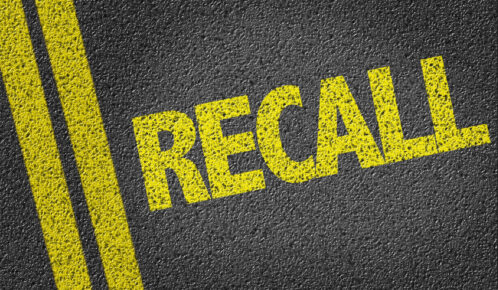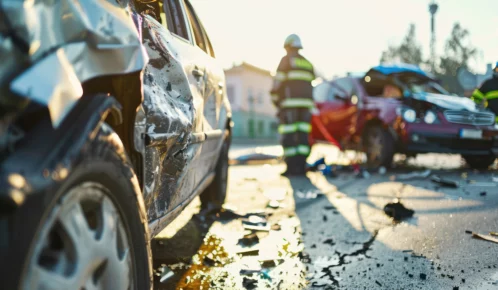Fault in a construction accident depends on the circumstances of the accident and its contributing factors. These factors include accident site, site conditions, and equipment or machinery used in the construction work. Insurance adjusters and lawyers review these factors when determining fault in a construction accident. Knowing how to determine fault in a construction accident is instrumental in getting a favorable outcome in your construction accident case.
Table of Contents
Who Can be Held Liable for a Construction Accident?
A single construction site may involve many people and entities at the same time. Identifying who is liable for construction accident damages can be challenging, as any involved party can be at fault. A construction accident attorney with proven history and skills in handling construction accident cases can investigate each party to determine who can be held responsible for construction injuries. Potentially at-fault parties in a construction accident generally include:
Construction Site Owner(s)
The owner of the construction site can be legally liable for construction accident damages in some cases. The responsibility of the construction site owner, however, relies on the accident type and the degree of involvement in the actual construction work.
In some instances, owners bear full responsibility for the accident, regardless of his or her degree of involvement in the construction work. In other instances, the injured party must demonstrate that the owner was significantly involved in the construction work. Owners are, for instance, held fully liable for incidents related to falls from a height, their level of involvement in the actual construction work notwithstanding.
General Contractors and Subcontractors
The Occupational Safety and Health Administration (OSHA) requires general contractors to keep construction sites reasonably safe and hire competent construction workers. They must notify workers of any possible dangers or existing harmful conditions on the site. They must also ensure workers are complying with the safety protocols.
Subcontractors have the same legal duties as general contractors. They are, however, responsible for specific parts of the construction site. General contractors or subcontractors can be liable for accidents occurring due to their failure to keep construction sites reasonably safe or inform workers of potential hazards, including safety problems and injury risks in the construction industry.
Architects, Engineers, and Designers
These professionals bear a different level of liability for construction accidents. Their liability depends on the provisions of the contract they signed with the construction site owner. Designers must perform regular inspections to ensure the construction project is progressing according to plans and code regulations. Architects and engineers must ensure their work and services meet the applicable standards. Architects, engineers, and designers can be legally responsible for any injuries occurring due to their failure to meet acceptable standards.
Product Manufacturers
Some construction accidents happen due to defective hand tools, equipment, machinery, or insufficient safety warnings. In such cases, the manufacturer of the product in question can be liable for injuries and damages suffered.
You can prove the manufacturer’s liability by presenting the defective product, a video of the product malfunctioning on the job, and pictures of missing or insufficient safety warnings. Eyewitness statements and expert witness testimony linking your injury to the alleged product are also crucial in establishing the manufacturer’s liability.
Your construction accident attorney can help you determine who can be held responsible for construction injuries.
Identifying Causes of Construction Accidents
Construction is one of the riskiest industries in the U.S. In fact, data from the U.S. Bureau of Labor Statistics (BLS) show that the construction industry contributed to about 1,000 of the 4,764 workplace fatalities reported in 2020. Some common causes of construction accidents include:
- Falls from elevated structures: Falls from heights are the leading cause of accidents and injuries in construction sites. They often occur when workers working at elevated structures step to the side or back without looking. They can also occur when workers use stairwells that do not have guardrails.
A fall from an elevated structure can result in catastrophic injuries or even fatalities if the construction site lacks fall protection systems. A construction worker injury lawyer can investigate the fall incident and assemble sufficient evidence to help you receive the highest workers’ compensation settlement. The lawyer can also help you pursue compensation from any third party that could have contributed to the fall.
- Insufficient or substandard training: Construction accidents can also happen when construction workers use tools, equipment, or machinery incorrectly due to insufficient training.
- Electrocution: Electrocution accounts for more than 8% of worker fatalities in the construction industry. Electrocution-related construction accidents happen when a worker comes into direct or indirect contact with an exposed electrified power source on the construction site. They can also occur when contractors or subcontractors fail to warn workers of sources of electricity on the construction site.
- Getting struck by objects: Construction accidents and injuries can occur when falling objects or motor vehicles hit workers. Falling objects can come from scaffolding, landing platforms, or construction equipment.
How to Determine Fault in a Construction Accident
Knowing how to prove liability in construction accidents requires an in-depth knowledge of state-specific building codes and regulations and common factors contributing to construction accident injuries. It also requires a careful review of the unique circumstances of the construction accident in question. It is not easy to determine who can be held responsible for construction injuries unless you are working with a knowledgeable construction accident attorney.
A construction accident attorney will consider the following factors when determining fault in your construction accident:
The Location of Your Construction Accident
Different parties oversee different parts of a construction site. Knowing exactly where your accident occurred can help your attorney determine who to hold liable for your injuries.
Existence of Hazardous Conditions
The presence of Dangerous conditions during a construction accident can be instrumental in determining fault. Your attorney will look into your accident to establish whether:
- Any hazardous conditions existed on the construction site;
- Any violations of the OSHA safety regulations caused the accident; and
- General contractors, subcontractors, and other third parties adhere to the safety protocols.
Equipment or Machinery Used
If you were using equipment or machinery when the accident happened, your attorney would look into that equipment or machinery. The attorney will determine whether it was properly maintained, used correctly, and compliant with all relevant safety standards. The attorney will also determine whether the equipment had any manufacturing defects.
When it comes to how to determine fault in a construction accident, your construction accident attorney will carefully evaluate all these aspects to determine who to hold liable and help you get compensation after a construction accident.



